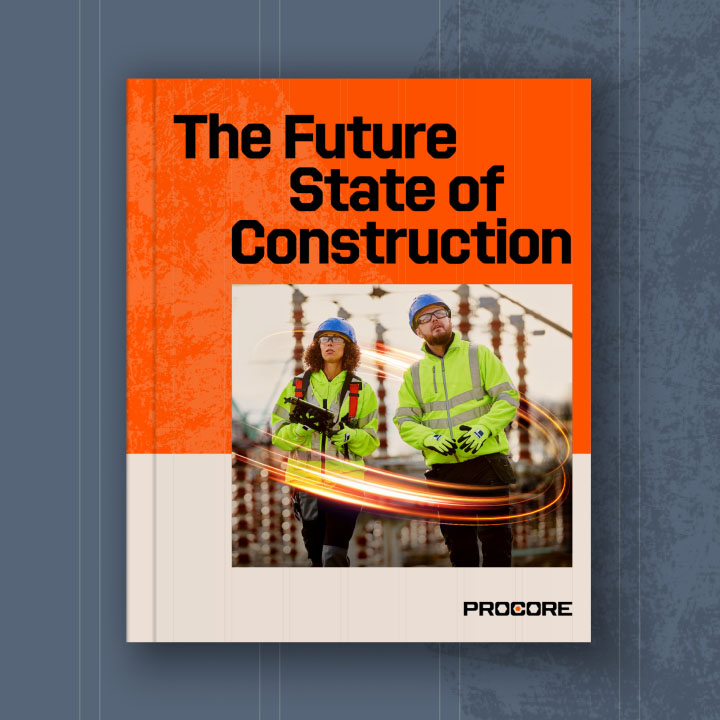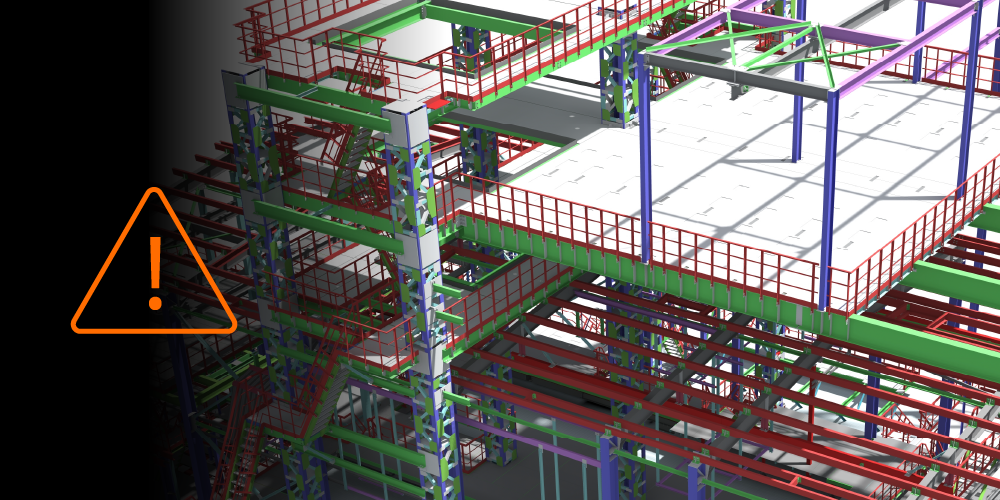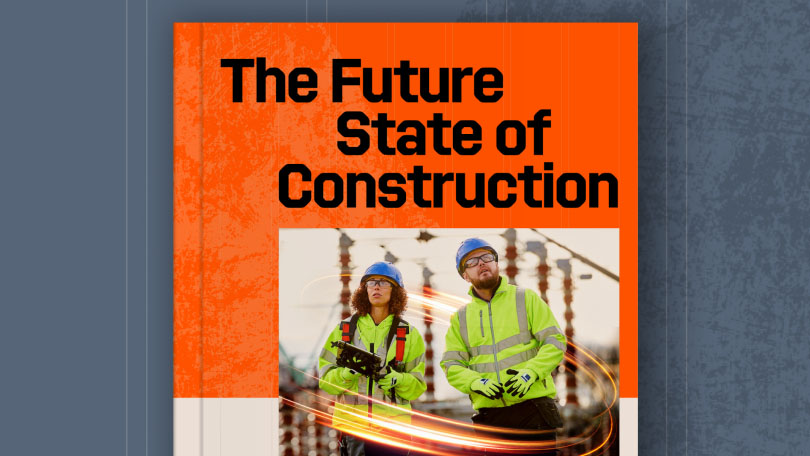Related Articles
— 9 min read
7 Essential Ways to Improve Profit in Construction

Last Updated Sep 10, 2025

Brendan McGurk
Strategic Product Consultant - Construction Financials
21 articles
"Brendan is a Strategic Product Consultant for Procore Financials, where he enjoys leading and innovating internal company processes to deliver on both public and private projects. He brings 12 years of experience working in various construction roles ranging from builder's hand to quantity surveyor and project manager on both the owner and main contractor side.
Originally studying Accounting, he changed direction to quantity surveying after the Christchurch Earthquake in 2011. He is now qualified and an NZIQS-recognised Quantity Surveyor. He’s since worked on projects from feasibility, concept design, and value engineering right through to construction and post-construction support.
Last Updated Sep 10, 2025

The construction industry is known for its tight margins and challenges in achieving profit in construction. While some straightforward strategies for increasing profitability exist (cost cutting being particularly appealing), short-term fixes aren’t generally a good recipe for long-term viability. Instead, businesses must focus on optimising operations, project management, financial performance and monitoring.
This article will discuss seven essential strategies and practices that Australian and New Zealand construction companies can adopt to enhance their profitability in a competitive market.
Table of contents
The Role of Strategy in Improving Profit in Construction
Improving profit in construction isn’t about finding quick revenue or cost-cutting hacks. You need long-term growth strategies that continuously develop and improve the bottom line over time.
Not only does strategic planning allow construction companies to anticipate market trends and adjust their approaches accordingly, but it also focuses on customers' needs, leading to great satisfaction.
With these ends in mind, here are seven foundational strategies for improving profitability in the construction industry.

7 Foundational Strategies for Improving Profitability in Construction
These seven strategies are powerful ways to improve construction profit margins. Prioritise them based on your current needs, but look to incorporate as many as possible.
1. Work to improve project estimation accuracy.
Project profitability hinges on how well you estimate the costs associated before you begin construction.
Profitability dips when you get this wrong.
If you agree on the project's price, but your costs shoot up, you’ll have to deal with a lower profit margin.
Of course, the opposite can happen too—costs are lower than expected—but we all know that's less likely.
The more accurate your estimates, the more likely you are to achieve your profit margin goals.
Data is your best friend when it comes to estimating.
Construction management software streamlines the estimation process by using historical data to predict future costs, reducing guesswork and enabling more accurate budgets for better profitability.
It’s crucial to stay on top of current trends. The costs of labour and materials can escalate rapidly, and given that projects can take time to initiate, it becomes essential to have accurate estimates by the time work begins on site.
Build trend data into your cost estimates. For instance, if material costs are increasing at a rate of 10% per annum, and you anticipate a project to kick off in 6 months, then you should consider adding 5% to the scope of material costs.
Software platforms that help you manage construction project budgets are also valuable here. Use historical data to understand how accurate your budgets are, then adjust.
For instance, if your projects regularly come in at 4% over budget, you may consider simply building in a 4% buffer into future estimates to stabilise.
2. Develop effective cost control measures.
More accurate project cost estimates are your first line of defence; from there, it's all about cost-control measures during the project.
Work on improving your spend visibility. Use your construction project financial management platform to build a custom reporting dashboard and track real-time spending.
In the same tool, build project budgets, track actual costs against projected figures, and set automated alerts to notify you when you’re tracking over budget (rather than waiting until you’re already over the threshold).
Use this information to be more agile with course corrections, making up for yesterday’s overspending with today’s adjustments to labour, materials, or timelines.
Building automated invoice approval workflows is another smart move. It helps you work faster (a cost-saver in and of itself) and ensures that costs are approved by the relevant authorities, reducing the likelihood of shadow spending blowing out a project budget.
How Buildcorp Streamlines Construction Projects
See how Buildcorp improves quality, reduces rework, and keeps every project on track from start to finish

3. Set your team up for more effective project management.
Teams that collaborate effectively—work efficiently.
Efficient work means less downtime, fewer delays due to questions and approval requests, and a more autonomous and agile workforce.
Ongoing training and real-time communication tools will help strengthen collaboration.
The first step is to migrate all work management into a construction-focused project management platform.
This will provide access to important features that will speed up workflows and improve visibility over progress, such as:
- Communication and accessibility of quality and safety policies
- The ability to provide field access to BIM models and drawings to avoid errors and delays
- Team collaboration and task management functionality
Next, you want to set up project management workflows that streamline operations and work within the context of your current process.
For instance, you want to use your project management tool to design a high-level timeline but have team members working on Kanban-style boards to improve focus and narrow objectives to the task level.
Get even more granular by utilising checklists and reminders at each stage.
Here’s an example:
When your materials are delivered, the site foreman might run through a checklist to ensure you got what you ordered.
This resolves any issues that pop up immediately.
Additionally, take advantage of automated workflows and notifications to prevent unnecessary manual work and to help keep stakeholders up to date.
For example, apprentices can check tasks off as complete, with your workflow automatically notifying a senior team member that the job needs their approval, eliminating the need for additional manual communication.
4. Double down on workforce management focus.
Trucks, hoists, diggers, and nail guns don’t run themselves (yet), meaning a capable, motivated, well-equipped team is at the heart of every successful construction business.
That means you’ll need to put some work into workforce management and planning, starting with hiring and recruitment.
Emphasise hiring for growth trajectory, competence, and a willingness to learn and be adaptable, and you’ll build a cross-capable team that will be eager to go beyond simply following instructions.
Don’t forget, though—hiring is only half the battle, with employee retention being just as critical.
Engage the need for progression by providing ongoing education, training, and development opportunities. Not only will this help upskill and broaden the abilities of your team (a profit driver in and of itself), but it will maximise fulfilment and help prevent turnover.
The other half of this equation is effective workforce and capacity planning, another facet of construction profit management driven by modern tech.
The workforce planning features in your construction management platform allow you to visualise your current capacity and understand where you might need to fill gaps with short-term labour or make more strategic long-term hiring decisions.
From there, you can assign and re-assign resources to various projects, track and manage leave requests, and monitor hours worked to prevent burnout and stay compliant with local labour laws.
Top tip: All of that ongoing training makes the workforce planning process easier, as broader skill sets mean that you have more options when assigning tasks and projects based on abilities.
5. Get in front of risk management.
Various risks, such as delays, weather conditions, supply chain disruptions, and safety risks, inherently expose construction projects.
Nearly all kinds of risk come with associated costs. For instance, a run of bad weather can ruin your workforce planning and require you to bring in more costly temporary labour.
Construction industry firms can protect their profitability by identifying potential risks and planning mitigation strategies.
- Planning and documentation ensure that the planning phase includes risk identification and that clear policies are in place for managing those risks.
- Contractor selection reduces potential issues from contractors by pre-screening them and maintaining a list of approved contractors.
- Organisational awareness ensures the entire team knows about potential risks and their respective management strategies.
If you train everyone in risk management, the project manager won't have to handle every problem alone. This will keep projects moving smoothly and let your company quickly solve risks.
6. Create a culture of continuous improvement.
The best way to position yourself for growth is to assume that you don’t already know the ideal approach.
Of course, if you did, you’d already be doing it, so there’d be no room for improvement.
But by adopting an experimental and scientific mindset, where you start from the assumption that you don’t know the best way forward, you can develop a company culture of continuous improvement.
Testing and experimentation will deliver the complex data you need to make informed decisions about process improvements.
Imagine, for example, that you’re looking to gain some efficiencies in your team’s task management processes.
You start with the assumptions that:
- What you’re doing now can be improved upon
- You don’t know what the best improvement is (though you have a hypothesis)
Let’s say that the hypothesis is that moving from a Gantt chart to a Kanban model will make it easier for team members to prioritise tasks and focus on their most urgent requirements, thereby speeding up task management processes.
Then, you design a scientific experiment. You need a control group (a team that continues to work in the old mode) and a test group (a team that moved to the Kanban model).
Assuming the two groups are equal (working on the same project, composed of people of the same abilities, etc.). You can monitor key metrics such as the amount of time tasks spend between stages and assess the two approaches for efficiency side by side.
7. Get clued up on the latest construction tech.
You might have noticed that technology has played an important role in practically all the strategies we’ve discussed for growing construction profit margins.
But tech doesn’t work in a vacuum; your (and your team’s) technological skills are equally valuable.
You need to be able to:
- Understand the current technological landscape to choose the right tools
- Leverage more advanced tools like Building Information Modeling (BIM) and construction management analytics
- Trust that everyone on your team can take full advantage of the software platforms they have at their disposal
So, before we sign off and let you start putting these profit growth strategies into action, let us share a few resources.
To understand the tech landscape and how to use modern construction platforms to drive profit, check out our Construction Management Software Buyer’s Guide for Developers.
Then, once you’ve organised your software stack, invest in team training and development (remember point 4).
Check them out here: Procore Certification Courses.
Remember, these strategies are all designed to help you grow long-term profit. They’re not short-term fixes.
Determine which strategies will impact your company right now, and get started on those immediately moving the needle.

The First Step To Improve Your Profit in Construction
The most successful (and profitable) construction companies focus on long-term strategic growth strategies over short-term corner-cutting or cost-reduction exercises.
In each of the 7 strategies discussed above, modern construction technology is vital in driving more efficient and effective processes with a solid downstream impact on revenue.
So, once you’ve determined which strategies to implement, set yourself up in a suitable construction-focused software platform.
Make it easier to manage profit in construction. Speak to our team to find out more.
See what’s coming in construction over the next decade.
Download the Future State of Construction Report for insights, trends, and innovations shaping the industry over the next 8–10 years.

Categories:
Written by

Brendan McGurk
Strategic Product Consultant - Construction Financials | Procore
21 articles
"Brendan is a Strategic Product Consultant for Procore Financials, where he enjoys leading and innovating internal company processes to deliver on both public and private projects. He brings 12 years of experience working in various construction roles ranging from builder's hand to quantity surveyor and project manager on both the owner and main contractor side.
Originally studying Accounting, he changed direction to quantity surveying after the Christchurch Earthquake in 2011. He is now qualified and an NZIQS-recognised Quantity Surveyor. He’s since worked on projects from feasibility, concept design, and value engineering right through to construction and post-construction support.
Explore more helpful resources

Managing Direct Costs in Construction: How Visibility Drives Profitability
Direct costs define the financial reality of every construction project. They cover the labour, materials, and equipment that drive delivery and determine profitability. But even the best-planned budgets can shift...

BIM Clash Detection: Reducing Rework, Delays, and Risk in Construction
Design clashes can be a significant hidden cost in construction, as each conflict between systems risks expensive rework, project delays, and reduced margins. BIM clash detection empowers teams to identify...

Next-Gen Job-Costing: Ready to Move? 5 Things to Consider Before You Get Started
In this three-part series, Quantity Surveyor turned Financial Solutions Specialist Clint Burgess uncovers the real-world gains for people, processes, and profits when businesses move from legacy to next-generation Enterprise Resource...

From Workarounds to Workflow: Solving Construction’s Legacy Job-Costing System Challenges with Next-Gen Tools
In this three-part series, Quantity Surveyor turned Financial Solutions Specialist Clint Burgess uncovers the real-world gains for people, processes, and profits when businesses move from legacy to next-generation Enterprise Resource...
